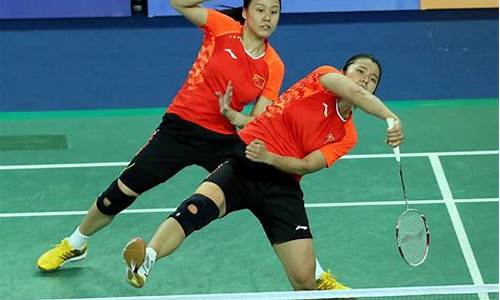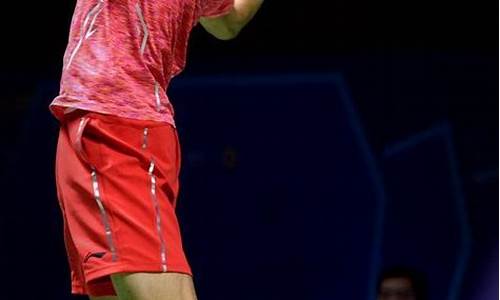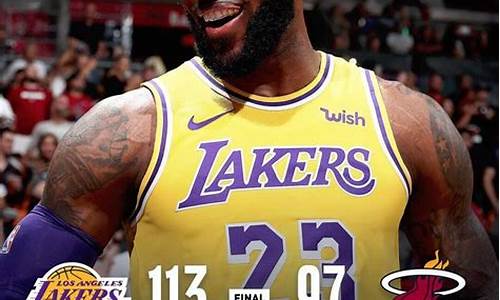奥运会有足球比赛吗英语怎么写_奥运有足球比赛嘛
1.足球比赛有哪三大?
2.足球用英语怎么写
3.用英语告诉我十种奥运会运动项目的名称及其中任意两项运动的比赛规则
4.各种奥运会项目用英语怎么说?
5.第29届奥运有比赛项目中英文对译

奥林匹克运动会比赛项目有三项:大项、分项和小项。有28个大项、302个小项。其中,男子、女子和男女混合竞赛小项分别为165、127和10项。
奥林匹克运动会的比赛项目是大项28项,这28项为:田径、赛艇、羽毛球、棒球、垒球、篮球、足球、拳击、皮划艇、自行车、击剑、体操、举重、手球、曲棍球、柔道、水上项目、现代五项、马术、跆拳道、网球、乒乓球、射击、射箭、铁人三项、帆船帆板、排球。
夏季奥林匹克运动会项目分项最多的是游泳项目(包括了竞技游泳、花样游泳、水球、跳水和公开水域游泳5个分项),而冬季奥林匹克运动会项目分项最多的则是滑雪项目(包括越野滑雪、高山滑雪、跳台滑雪、北欧两项、自由式滑雪和单板滑雪6个分项)。田径虽然没有分项,却有47个小项,其中男子24个小项,女子23个小项,是奥林匹克运动会项目中金牌最多的。
扩展资料:
近代奥林匹克运动会的主要竞赛项目之一的马拉松:
马拉松跑是在公路上举行的一种超长距离的赛跑,全程为42.195公里。因各地举行这项比赛的客观条件相差较大,所以没有世界纪录,只公布最高成绩。马拉松跑是近代奥林匹克运动会的主要竞赛项目之一。
马拉松跑的距离很长,能量消耗大,所以要特别注意跑得省力,其动作应较一般长跑平稳、柔和、速度均匀,后蹬用力较小,大腿前摆稍低,蹬地后小腿上摆不高,用全脚或大部分脚掌着地。
另外,由于公路上地形可能有起伏、转弯、倾斜等变化,跑的动作也必须适应地形而有所改变,步长与步频要因人而异,用较均匀的速度跑完全程。
马拉松跑的训练是以有氧代谢训练方法为主。高水平的运动员能以3分钟每公里的平均速度持续跑进,这对心脏机能要求相当高。优秀运动员每周跑160—250公里,多者竟达300公里以上。每年跑的总量可达10000公里。常用的手段是长时间匀速跑、变速跑、间歇跑。
百度百科-奥运会项目
人民网-竞技攀岩成为2020年东京奥运会正式比赛项
足球比赛有哪三大?
田径: track & field
sprint/middle-distance/long run 短/中/长距离跑
marathon 马拉松
relay race; relay 接力
hurdles; hurdle race 跨栏
walking; walking race 竞走
steeplechase 障碍赛
high jump 跳高
pole jump,pole vault 撑竿跳高
long jump 跳远
high skip and jump 跳
shot put 推铅球
discus 铁饼
weight throw 链球
gelock,jelin 标枪
decathlon 男子十项全能(100米跑、跳远、铅球、跳高、400米跑,110米跨栏跑、铁饼、撑竿跳高、标枪、1500米跑
heptathlon 女子七项全能(100米跨栏跑、跳高、铅球、200米跑、跳远、标枪、800米跑)
triathlon 铁人三项:**(1500米);自行车(40公里);跑步(10公里)
射击: shooting
Men';s/Women';s Shooting 10m Air Rifle 男子/女子10米气
Men';s/Women';s Shooting 10m Air Pistol 男子/女子10米气
Shooting Trap 多向飞碟
Shooting 10m Running Target 10米移动靶
Shooting 25m Pistol 25米运动,
跳水:diving
Men';s/Women';s Diving Synchronized 10m Platform 男子/女子10米双人跳台
Men';s/Women';s 10m Platform 男子/女子10米跳台
Men';s/Women';s 3m Springboard 男子/女子3米跳板
Men';s/Women';s Synchronized 3m Springboard 男子/女子3米双人跳板
swimming
400 medley 400米混合泳
freestyle 自由泳
breaststroke 蛙泳
gbutterfly 蝶泳
obackstroke 仰泳
Men';s/women';s 4x100 freestyle 男子/女子4x100混合泳接力划船:rowing
canoe/kayak 划皮艇
canoe slalom 轻舟激流
sailing 帆船运动2
repechages (赛艇和击剑等运动的)补充赛
体操:gymnastics
rings 吊环
balance beam 平衡木
trampoline 鞍马
vaulting horse 跳马
Women';s Artistic Gymnastics Uneven Bars 竞技体子高低杠
Women';s Artistic Gymnastics Beam 竞技体子自由体操
Men';s Artistic Gymnastics Parallel Bars 竞技体子双杠
Men';s Artistic Gymnastics horizontal Bar 竞技体子单杠
Men/Women;Artistic Gymnastics Team Finals 男子/女子团体竞技体操
Men/Women;Artistic Gymnastics All-Around Finals 竞技体子/女子个人全能决赛
击剑:Fencing
Men/Women’s Fencing Sabre 击剑男子/女子长剑
Men; Fencing (Team) Foil 击剑男子(团体)花剑
Women’s Fencing Foil 击剑女子花剑
Men';s/Women’s Fencing (Team) Epee 击剑男子/女子(团体)重剑,
举重:Weightlifting
Men';s Weightlifting 77kg 男子77公斤级举重
Women';s Weightlifting 75+ kg 女子75公斤以上级举重
clean and jerk 挺举
snatch 抓举
射击:shooting;
Men';sWomen';s Shooting 10m Air Rifle 男子/女子10米气
Men';s/Women';s Shooting 10m Air Pistol 男子/女子10米气
Women';s Shooting Trap 射击女子多向飞碟
Men';s Shooting 10m Running Target 射击男子10米移动靶
Women';s Shooting 25m Pistol 射击女子25米运动
球类运动:ball games
golf 高尔夫球
cricket 板球
hockey 曲棍球
volleyball 排球
badminton 羽毛球
table tennis 乒乓球
baseball 棒球
basketball 篮球
football/ 足球
tennis 网球
rugby 橄榄球
softball 垒球
handball 手球
water polo 水球
击:boxing
跆拳道: taekwondo
滑冰: ice skating
figure skating 花样滑冰
摔跤: wrestling
freestyle wrestling 自由式摔跤
Greece-Roman wrestling 古典式摔跤
自行车: cycling
individual/team pursuit 个人/团队争先赛
Women';s 500m Time Trial 女子500米计时赛
1km Time Trial
男子1公里计时赛
Men';s/Women';s Team Sprint 男子/女子个人追逐赛(男4000米,女3000米)
0 o5 I; n2 z/ P8 jMen';s Team Sprint 男子团队追逐赛(4000米)
Men';s/Women';s Points Race 男子/女子记分赛
Men';s Keirin 凯林赛
Men';s Madison 麦迪逊赛
Cycling Mountain Bike:Cross Country 山地车:越野
马术:equestrian
dressage 盛装舞步
jumping individual show jumping 单马超越障碍比赛
eventing 综合全能马术比赛
箭术: archery
足球用英语怎么写
界杯,奥运会足球赛,联合会杯
世界杯(World Cup(FIFA World Cup,国际足联世界杯,世界足球锦标赛)是世界上最高水平的足球比赛,与奥运会、F1并称为全球三大顶级赛事。每四年举办一次,任何国际足联(FIFA)会员国(地区)都可以派出代表队报名参加,而世界杯主要分为预选赛阶段和决赛阶段两个阶段。
奥运足球比赛: 足球
足球被称为"世界第一运动",古希腊、罗马、中国等都曾盛行过足球游戏。
英国剑桥大学的学生是现代足球的创始者。
由于国际奥委会规定只允许业余足球运动员参加奥运会足球比赛,因而奥运会足球赛并不是世界最高水平的比赛。分男、女两项
联合会杯
联合会杯足球赛的前身为洲际杯足球赛,于1991年由亚洲、非洲、南美和北美加勒比地区足联提议发起,现由国际足联主办,05年改为每四年举行一届,之前为两年一届,第8届比赛将在2009年进行。参赛队为东道主国家足球队和上一赛季各大洲足球锦标赛、杯赛的冠军队和世界冠军队等。1992年1月,在沙特阿拉伯首都利雅得举行了首届洲际杯足球赛,阿根廷队获得冠军。
用英语告诉我十种奥运会运动项目的名称及其中任意两项运动的比赛规则
足球英语单词,football。
是名词,表示英式足球,和football意思相似,是一种需要各有十一人的两组队伍共同参与的运动项目,也是奥运会的一个项目。其原型是中国古代的蹴鞠。
各种奥运会项目用英语怎么说?
如果你认为我手工录入容易的话1分也不要追。
规则用标准奥运比赛规则
游泳swimming
跳水diving
花样游泳synchronized swimming
水球water polo
射箭archery
田径athletics
羽毛球badminton
棒球baseball
篮球basketball
拳击boxing
皮划艇静水canoe/kayak-flatwater
皮划艇激流回旋canoe/kayak-slalom
小轮车cycling bmx
自行车场地赛cycling track
自行车公路赛cycling rode
山地自行车cycling mountain bike
马术equestrian
击剑fencing
足球football
体操gymnastics
艺术体操rhythmic gymnastics
蹦床trampoline
手球handball
曲棍球hockey
柔道judo
现代五项modern pentathlon
赛艇rowing
帆船sailing
射击shooting
垒球softball
乒乓球table tennis
跆拳道taekwondo
网球tennis
铁人三项triathlon
排球volleyball
沙滩排球beach volleyball
举重weightlifting
摔交wrestling
自行车场地赛cycling track规则:
Competition Format
Sprint
Riders will complete a 200m-time trial to determine the qualifiers (18 men and 12 women) who will advance to the next phase (1/16th final for men and 1/8th final for women). The 1/16th and 1/8th finals are contested head to head with the winners advancing to the next phase and losers going to the repechages. From the quarterfinals, two-up matches over two heats (and a third deciding heat if necessary) will take place.
Quarterfinal winners will continue to the semi-finals and losers will ride a four-up sprint for places 5-8. The two winners of the semi-finals will compete for the first and second place and the two losers of the semifinals for the third and fourth.
Individual Pursuit
A qualifying round of head to head heats will select the eight best riders on the basis of their time, in order to compete in the first round over a distance of 4 km for men and 3 km for women. The four winners of the first round shall contest the finals. The riders with the two best times shall ride for the first and second place, while the two other riders shall ride for third and fourth places. The riders will start on opposite sides in the middle of the two straights of the track. Catching up with the other rider or recording the fastest time will determine the winner.
Points Race
Riders will cover a total distance of 40km for men (160 laps) and 25km for women (100 laps). Intermediate sprints occur every 10 laps. Sprint points will be awarded as follows: 5 points to the first rider, 3 points to the second, 2 points to the third and 1 point to the fourth. Any rider that gains a lap on the main bunch is awarded 20 points, while loses a lap will he 20 points deducted. The winner will be declared according to the accumulated points won. Where there is a draw on points, the place during the final sprints shall decide the final result.
Madison
Teams consisting of two riders will compete in a race run over a distance of 50km (200 laps) with intermediate sprints. The final placing will be determined by the accumulated points in the sprints, which occur every 20 laps, or by the distance according to the complete laps covered by each team. Teams hing covered the same number of laps will be placed according to their accumulated points. Where there is a draw on laps and points, the place during the final sprint shall decide the final result.
Sprint points will be awarded as follows: 5 points to the first team, 3 points to the second, 2 points to the third and 1 point to the fourth.
Team Pursuit
Two teams of four riders will compete against each other in a 4km race, starting from the middle of the straight of each side of the track. Recording the fastest time or catching up with the other team will determine the winner. The front tyre of the third rider of each team crossing the line will determine the time of each team.
A qualifying round is conducted to determine which teams compete in the first round. Each team competes alone on the track with the best eight teams advancing to the first round selected on the basis of their time. The four winners of the first round shall contest the finals. The teams with the two best times shall ride for the first and second place, while the other two teams shall ride for third and fourth place.
Team Sprint
In team sprint, two teams of three riders will run over 3 laps of a track, each of those riders leading for one lap. A qualifying round, run by heats, will select the eight best teams on the basis of their times, in order for them to compete in the first round. The four winners of the first round shall contest the finals. The teams with the two best times shall ride for the first and second place, while the other two teams shall ride for third and fourth place.
Keirin
Riders will run a two and a half laps sprint after completing five and a half laps behind a motorized pacer (derny). The pacer will start at 30km per hour and gradually increase the speed to 50km per hour, before leing the track. The first round consists of 4 heats of 6 riders, with the first 2 riders from each heat advancing to the second round, and the remaining riders will go to the repechages. The second round consists of 2 heats of 6 riders, with the first 3 riders of each heat proceeding to the final for places 1-6, while the remaining riders will compete for places 7-12.
山地自行车cycling mountain bike规则:
Competition Format
The race is a mass start event, during which, after several laps of the circuit, the first rider to complete the distance is declared the winner.
At the start, riders will be positioned in the starting line according to their current UCI ranking. The higher position riders will be placed at the front of the group. Should a rider be led at any time during the race, the rider must finish that lap and then is removed from the competition by a commissaire via a designated finish lane before the start of the finish straight. The led rider will be listed in the results in order of finish plus number of laps down.
The course is an undulating circuit designed to produce an optimum winning time, not a specific distance. Time parameters are listed below (in hours and minutes).
Minimum Maximum
Men 2.00 2.15
Women 1.45 2.00
第29届奥运有比赛项目中英文对译
1、羽毛球:badminton,?[?b?dm?nt?n]。
1873年,在英国格拉斯哥郡的伯明顿镇有一位叫鲍弗特的公爵, 在他的领地开游园会时,有几个从印度回来的退役军官就向大家介绍了一种隔网用拍子来回击打毽球的游戏,人们对此产生了浓厚的兴趣。“伯明顿”(Badminton)即成为英文羽毛球的名字。
自1992年起,羽毛球成为奥运会的正式比赛项目。
2、棒球:baseball,[?be?sb?:l]。
指的是棒球运动是一种以棒打球为主要特点,集体性、对抗性很强的球类运动项目。它在国际上开展较为广泛,影响较大。棒球项目1992年被列入奥运会比赛项目。
3、篮球:basketball,?[?bɑ:sk?tb?:l]。
1904年,圣路易斯奥运会上第1次进行了篮球表演赛。1936年,篮球在柏林奥运会中被列为正式比赛项目 。1992年,巴塞罗那奥运会开始,职业选手可以参加奥运会篮球比赛。
4、体操:Gymnastics,[d?m?n?st?ks]。
广义的“体操”是对所有体操项目的总称。现代奥运会体操项目设有竞技体操、艺术体操?和蹦床三个大项,除此以外还有竞技健美操、技巧运动等非奥运会项目。
5、网球:Tennis?。
直到年的洛杉矶奥运会上,网球才被列为表演项目。到1988年的汉城奥运会上,网球重新被列为正式比赛项目。
百度百科-网球
百度百科-体操
百度百科-篮球
百度百科-棒球
百度百科-羽毛球
田径 Track and field
田径是体育运动中最古老的运动项目。
田径是奥林匹克运动的基石,最能体现奥林匹克"更快、更高、更强"的座右铭。
田径也是奥运会设金牌最多的项目,因此有人用"得田径者得天下"来形容田径在奥运会金牌总数中所占的位置。
A、 男子:100米跑、200米跑、400米跑、800米跑、1500米跑、5000米跑、10000米跑、马拉松跑、3000米障碍跑、110米跨栏跑、400米跨栏跑、跳高、撑杆跳高、跳远、跳远、铅球、铁饼、链球、标枪、十项全能、20公里竞走、50公里竞走、4×100米接力、4×400米接力;
B、 女子:100米跑、200米跑、400米跑、800米跑、1500米跑、5000米跑、10000米跑、马拉松跑、100米跨栏跑、400米跨栏跑、跳高、跳远、跳、撑高跳高、铅球、铁饼、标枪、链球、七项全能、4×100米接力、4×400米接力、20公里竞走。
赛艇 Races boats
运动员背向前进方向划水的一项划船运动,起源于英国17世纪到18世纪中叶。
赛艇按乘坐人数,有无舵手,以及使用单桨还是双桨划分项目。比赛距离男子2000米,女子为1000米,每条航道宽12.5~15米。
A、 男子:单人双桨、双人双桨、双人单桨无舵手、双人单桨有舵手、四人双桨无舵手、四人单桨无舵手、四人单桨有舵手、八人单桨有舵手;
B、 女子:单人双桨、双人双桨、双人单桨无舵手、四人双桨有舵手、四人单桨有舵手、八人单桨有舵手。
自行车 bicycle
起源于欧洲。1896年列为首届奥运会比赛。
A、 男子11项 场地项目:1公里计时赛、个人争先赛(3圈)、4000米个人追逐赛、4000米团队追逐赛、记分赛、奥林匹克争先赛、麦迪逊赛、凯林赛; 公路项目:个人赛、个人计时赛 山地车:越野
B、 女子7项 场地项目:500米计时赛、个人争先赛(3圈)、3000米个人追逐赛、记分赛; 公路项目:70公里个人赛、个人计时赛 山地车:越野
游泳 swimming
奥运会游泳比赛共设31个项目,是仅次于田径运动的金牌大户。
A、 男子 游泳:50米自由泳、100米自由泳、200米自由泳、400米自由泳、1500米自由泳、100米仰泳、200米仰泳、100米蛙泳、200米蛙泳、100米蝶泳、200米蝶泳、200米混合泳、400米混合泳、4×100米自由泳接力、4×200米自由泳接力、4×100米混合泳接力; 跳水:3米跳板、10米跳台、双人3米跳板、双人10米跳台; 水球:1项;
B、 女子 游泳:50米自由泳、100米自由泳、200米自由泳、400米自由泳、800米自由泳、100米仰泳、200米仰泳、100米蛙泳、200米蛙泳、100米蝶泳、200米蝶泳、200米混合泳、400米混合泳、4×100米自由泳接力、4×200米自由泳接力、4×100米混合泳接力; 跳水:3米跳板、10米跳台、双人3米跳板、双人10米跳台。
拳击 Boxing
起源于3000多年前的埃及,后相继在地中海沿岸国家传播。公元前第23届古希腊奥运会列为竞技项目。
现代拳击始于英国,17世纪十分盛行。1904年第3届奥运会列入比赛项目。
奥运会拳击比赛只允许业余运动员参加,按体重分12个级别进行:48、51、54、57、60、63.5、67、71、81、91公斤以上级。
排球 volleyball
源于美国。1964年第18届奥运会被列为比赛项目。
男、女各分排球与沙滩排球两项。
皮划艇 Leather canoe
运动员面向前进方向的一项划船运动,包括皮艇和划艇。欧洲开展广泛,水平一直处于世界领先地位。
A、 男子12项 静水项目:500米单人皮艇、500米双人皮艇、1000米单人皮艇、1000米双人皮艇、1000米四人皮艇;500米单人划艇、500米双人划艇、1000米单人划艇和1000米双人划艇; 急流回旋项目:单人皮艇、单人划艇、双人划艇;
B、 女子4项 静水项目:500米单人皮艇、500米双人皮艇、500米四人皮艇; 急流回旋项目:单人皮艇。
马术 Horse-riding
马术运动是在马上进行各种运动的总称。早在4000多年前的铜器时代就有骑马比赛。
现代马术运动起源于英国,16世纪传入欧洲。1900年第2届奥运会列入比赛项目。 马术比赛分盛装舞步、超越障碍和三日赛,每一项又分团体和个人两项。
篮球 basketball
源于美国。
1936年第11届奥运会列为正式比赛项目。
球场长为28米,宽15米。篮板长1.20米,宽1.80米,底端距地面2.75米。球重600~650克。全场比赛40分钟。分男、女两项。
足球
足球被称为"世界第一运动",古希腊、罗马、中国等都曾盛行过足球游戏。
英国剑桥大学的学生是现代足球的创始者。
由于国际奥委会规定只允许业余足球运动员参加奥运会足球比赛,因而奥运会足球赛并不是世界最高水平的比赛。分男、女两项。
体操 gymnastics
18世纪末,现代体操兴起于欧洲,曾是体育的代名词。1896年列为首届奥运会比赛项目。
A、 男子:团体、个人全能、自由体操、鞍马、吊环、跳马、双杠、单杠、蹦床个人赛;
B、 女子:团体、个人全能、跳马、高低杠、平衡木、自由体操、艺术体操之个人全能与团体全能、蹦床个人赛。
手球 Handball
起源于欧洲。分男、女两项。
举重 Weight lifting
起源于远古时代人类举石块显示力量。近代举重运动兴起于18世纪欧洲。
A、 男子:56KG、62KG、69KG、77KG、85KG、94KG、105KG、+105KG;
B、 女子:48KG、53KG、58KG、63KG、69KG、75KG、+75KG。
柔道 Judo
起源于日本。男、女柔道分别在1964年第18届奥运会和1992年第25届奥运会上被列为比赛项目。
A、 男子:-60KG、60-66KG、66-73KG、73-81KG、81-90KG、90-100KG、+100KG;
B、 女子:-48KG、48-52KG、52-57KG、57-63KG、63-70KG、70-78KG、+78KG。
摔跤 Wrestling
可追溯到公元前几千年,在日本、中国、希腊、埃及等国的古代文明中都有摔跤的文字记载。只限男子参加。
A、 自由式摔跤:48-54KG、58KG、63KG、69KG、76KG、85KG、KG、-130KG;
B、 古典式摔跤:48-54KG、58KG、63KG、69KG、76KG、85KG、KG、-130KG。
羽毛球 Badminton
1800年流行于印度普那地区的一种球类游戏,球用羽毛和软木制作,类似中国的键子。后传入英国及北欧等国。
羽毛球场地长13.40米,单打球场宽5.18米,双打球场宽6.10米,中间悬挂长6.10米,宽76厘米的球网。
1992年第25届奥运会开始成为正式比赛项目。
A、 男子:单打、双打
B、 女子:单打、双打
C、 混合:混合双打
垒球 Softball
女子1项。
现代五项 Modern five items
由现代奥林匹克运动奠基人顾拜旦创导,以衡量运动员的全面能力。
分马术、击剑、游泳、射击、越野跑五项,男、女各一枚奖牌。
网球 Tennis
男女网球分别于1896年首届奥运会和1900年第2届奥运会列为比赛项目,后因各种原因被取消,1988年第24届奥运会才重新回到奥林匹克大家庭。
男、女各分单打、双打两项。
击剑 fencing
始于古代决斗,盛行于西欧各国。1896年首届奥运会被列为比赛项目,是奥运会初期唯一允许职业选手参赛的项目。
A、 男子:花剑个人、花剑团体、佩剑个人、佩剑团体、重剑个人、重剑团体;
B、 女子:花剑个人、花剑团体、重剑个人、重剑团体。
乒乓球 ping-pong ball
19世纪后半叶始于英国。20世纪20年代传入欧洲大陆,继而在美洲和亚洲等国家广泛开展。
1988年第24届奥运会被列入正式比赛项目。
乒乓球在中国有"国球"之称。
男、女各分单打、双打两项。
射击 Fire
越源于活动。世界性的射击比赛可追溯到1896年的首届奥运会。
1988年第24届奥运会开始设置女子项目。
A、 男子:气(10米)、速射(25米)、慢射(50米)、气(10米)、小口径自选3×40(50米)、小口径60发卧射(50米)、10米移动靶、飞碟双多向、飞碟多向、飞碟双向;
B、 女子:气(10米)、运动(25米)、气(10米)、小口径自选3×20(50米)、飞碟双多向、飞碟多向、飞碟双向。
铁人三项 Iron man three items
男子个人赛、女子个人赛。
射箭 Archery
人类早在2万年前就使用弓箭进行活动。现代射箭运动始于英国。
1908年被列为奥运会比赛项目,1920年被取消,直到12年奥运会才恢复。
A、男子:奥林匹克淘汰赛个人赛(70米)、奥林匹克淘汰赛团体赛(70米);
B、女子:奥林匹克淘汰赛个人赛(70米)、奥林匹克淘汰赛团体赛(70米)。
帆船 Sailing ship
起源于荷兰。1900年第2届奥运会开始列入比赛项目。
1988年第24届奥运会单独增设女子比赛项目。
A、 男子:帆船470级、帆船芬兰人级、帆板米氏级;
B、 女子:帆船470级、帆船欧洲级、帆板米氏级;
C、 混合:索林级、49人级、激光级、特纳多级等。
跆拳道 Tae Kwon Do
A、 男子:-58KG、-68KG、-80KG、+80KG;
B、 女子:-49KG、-57KG、-67KG、+67KG
声明:本站所有文章资源内容,如无特殊说明或标注,均为采集网络资源。如若本站内容侵犯了原著者的合法权益,可联系本站删除。












